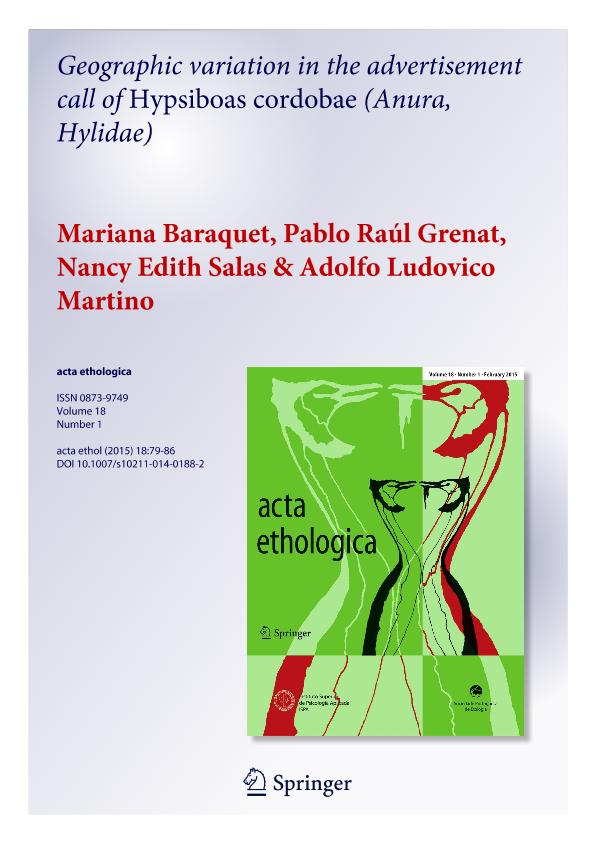Artículo
Geographic variation in the advertisement call of Hypsiboas cordobae (Anura, Hylidae)
Fecha de publicación:
03/2014
Editorial:
Springer Heidelberg
Revista:
Acta Ethologica
ISSN:
0873-9749
Idioma:
Inglés
Tipo de recurso:
Artículo publicado
Clasificación temática:
Resumen
Geographic variation in the advertisement call of anuran is commonly observed among conspecific populations. We analyzed the geographic variation of advertisement calls in six populations of the Argentinean treefrog species Hypsiboas cordobae throughout its geographic distribution. The advertisement calls of this species consisted of three, four or five tonal notes. Spectral call variables showed significant differences among populations, as in the first and second inter-note intervals. Discriminant function analysis demonstrated significant multivariate differences among populations. All spectral variables exhibited clinal variation, with frequencies increasing significantly from north to south. These same variables were negatively correlated with the altitudes of the six populations. Mantel tests showed no significant correlation between geographic distances and bioacoustic distances or between altitudinal distances and bioacoustic distances, attributable to that call variations are due to different levels of latitudinal and altitudinal populations studied, and not to the distances between pairs of localities. Altitudinal variation in spectral properties may be attributable to an inverse relation with body size, which varies clinally along the same geographical axis.
Palabras clave:
Hypsiboas Cordobae
,
Geographic Variation
,
Advertisement Call
,
Altitude
,
Latitude
Archivos asociados
Licencia
Identificadores
Colecciones
Articulos(CCT - CORDOBA)
Articulos de CTRO.CIENTIFICO TECNOL.CONICET - CORDOBA
Articulos de CTRO.CIENTIFICO TECNOL.CONICET - CORDOBA
Citación
Baraquet, Mariana; Grenat, Pablo Raúl; Salas, Nancy Edith; Martino, Adolfo Ludovico; Geographic variation in the advertisement call of Hypsiboas cordobae (Anura, Hylidae); Springer Heidelberg; Acta Ethologica; 18; 1; 3-2014; 79-86
Compartir
Altmétricas




